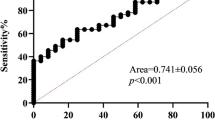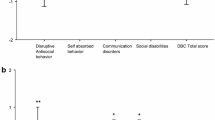Abstract
Zootherapy, more specifically in its equine form, has proliferated recently as a therapeutic activity and is one of the most common applications in the stimulation of autistic individuals. At the same time, the influence of certain hormones was recently revealed in the behavior of autistic spectrum disorders. We propose to objectify the influence of analyzing equestrian therapies through laboratory methods and non-invasive techniques (salivary samples), in the hormone levels of cortisol and progesterone, thus indirectly those of oxytocin, before and after hippotherapy sessions for people with Autism Spectrum Disorder (ASD). The main results indicated that equine therapy decreased (p ≤ 0.05) the levels of salivary Cortisol in the rest of the sessions (before Hippotherapy 33.11 ± 0.96 ng/mL vs. after Hippotherapy 2.23 ± 0.75 ng/mL). And also the levels of salivary progesterone in the first session (before Hippotherapy 28.63 ± 12.81 ng/mL vs. after Hippotherapy 51.59 ± 33.11 ng/mL) and in the rest of the sessions (before hippotherapy 21.58 ± 12 pg/mL vs. after Hippotherapy 26.03 ± 11.98 pg/mL) which was always on the rise. These effective results were corroborated with the Cortisol/Progesterone Balance which reduced after equine therapy in the first session (before Hippotherapy 99.87 vs. after Hippotherapy 76.24) and the other sessions (before Hippotherapy 181.31 vs. after Hippotherapy 110.48). In conclusion, the Hippotherapy sessions for the population with ASD generated leads to an improvement in social attitudes, and it is confirmed with the effective modulation of the implicating hormones.
Similar content being viewed by others

References
DSM-IV, Manual Diagnóstico y estadístico de los Trastornos Mentales, Barcelona: Masson, 1997.
Andari, E., Duhamel, J.R., Zalla, T., Herbrecht, E., Leboyer, M., and Sirigu, A., Proceeding of the National Academy of Sciences of the United States of America, 2010, vol. 9, no. 107, pp. 4389–4394.
Bales, K.L., Boone, E., Epperson, P., Hoffman, G., and Carter, C.S, Front Psychiatry, 2011, vol. 2, p. 24.
Kosfeld, M., et al., Nature, 2005, vol. 435, pp. 673–676.
Kirsch, P., Esslinger, C., Chen, Q., Mier, D., Lis, S., Siddhanti, S., Gruppe, H., Mattay, V.S., Gallhofer, B., and Meyer-Lindenberg, A., J. Neurosci., 2005, vol. 25, no. 49, pp. 11489–11493.
Fischer-Shofty, M., Shamay-Tsoory, S.G., Harari, H., and Levkovitz, Y., Neuropsychologia, 2010, vol. 1, no. 48, pp. 179–184.
Modahl, C., Green, L., Fein, D., Morris, M., Waterhouse, L., Feinstein, C., and Levin, H., Biol. Psych., 1998, vol. 4, no. 43, pp. 270–277.
Gutkowska, J., Jankowski, M., Mukaddam-Daher, S., McCann, S.M., Chantal, L., and Zingg, H.H., Proceeding of the National Academy of Sciences of the United States of America, 1997, vol. 21, no. 94, pp. 11704–11709.
Engelmann, et al., Am. J. Physiol., 2000, pp. 1255–1305.
Hollander, E., Bartz, J., Chaplin, W., Phillips, A., Sumner, J., Soorya, L., Anagnostou, E., and Wasserman, S., Biol. Psych., 2006, vol. 4, no. 61, pp. 498–503.
Kovacs, G.L., Sarnyai, Z., and Szabo, G., Psycho-neuroendocrinology, 1998, vol. 8, no. 23, pp. 945–962.
Uvnas-Moberg, K., Bjokstrand, E., Hillegaart, V., and Ahlenivs, S., Psychopharmacology, 1999, vol. 1, no. 142, pp. 95–101.
Agren, G. and Lundeberg, T., Neuroreport, 2002, vol. 11, no. 13, pp. 1415–1419.
Ditzen, B., Schaer, M., Gabriel, B., Bodenmann, G., Ehlert, U., and Heinrichs, M., Biol. Psych., 2009, vol. 9, no. 65, pp. 728–731.
Legros, J.J., Bulletin et Mémoires de l’AcademieRoyale de Médecine de Belgique, 2002, vol. 7–9, no. 157, pp. 383–389.
Brown, S.L., Fredrickson, B.L., Wirth, M.M., Poulin, M.J., Meier, E.A., Heaphy, E.D., Cohen, M.D., and Schultheiss, O.C., Hormones Behavior, 2009, vol. 5, no. 56, p. 574.
Amico, J.A., Seitchik, J., and Robinson, A.G., J. Clin. Endocrinol. Metabolism, 1984, vol. 2, no. 2, pp. 274–279.
Nemsadze, K. and Silagava, M., Georgian Med. News, 2010, vol. 189, pp. 21–26.
Yao, J.K., Moss, H.B., and Kirillova, G.P., Clin. Biochem., 1998, vol. 3, no. 31, pp. 187–190.
Mirasoli, M., Deo, S.K., Lewis, J.C., Roda, A., and Daunert, S., Anal. Biochem., 2002, vol. 2, no. 306, pp. 204–211.
Galard, R., Gallart, J.M., Catalan, R., Schwartz, S., Arguello, J.M., and Castellanos, J.M., Am. J. Psych., 1991, vol. 4, no. 148, pp. 505–508.
Canal, R. and Rivière, A., Conducta de juego y expresiones emocionales de Niños Autistas no verbales en una situación natural de interacción, 1996.
Frith, U., Autismo, Madrid: Alianza, 1991.
Frith, U., Autismo: Hacia una explicacio’n del enigma, Madrid: Alianza, 2004.
Rivière, A., Desarrollo normal y autism, Madrid: Universidad Auto’noma de Madrid, 1997.
Nemsadze, K. and Silagava, M., Georgian Med. News, 2010, vol. 189, pp. 21–26.
Meston, C.M. and Frohlich, P.F., Arch. General Psych., 2000, vol. 11, no. 57, pp. 1012–1030.
Hendrick, V., Altshuler, L.L., and Suri, R., Psychosomatics, 1998, vol. 2, no. 39, pp. 93–101.
Rivière, A., Autismo: Orientaciones para la intervención educativa, Madrid: Trotta, 2001.
Aguilera, A., Moreno, F.J., and Rodríguez, I.R., Revista de Educación, 2007, vol. 344, pp. 425–445.
Corbett, B.A., Gunther, J.R., Comins, D., Price, J., Ryan, N., Simon, D., Schupp, C.W., and Rios, T., J. Autism Development Disorder, 2011, vol. 4, no. 41, pp. 505–511.
Martos, J., Neurology, 2005, vol. 1, no. 40, pp. 177–180.
Ojea Rúa, M., El Espectro Autista. Intervencio’n Psicoeducativa, Ma’laga: Algibe, 2004.
Author information
Authors and Affiliations
Corresponding author
Additional information
The article is published in the original.
Rights and permissions
About this article
Cite this article
Tabares, C., Vicente, F., Sánchez, S. et al. Quantification of hormonal changes by effects of hippotherapy in the autistic population. Neurochem. J. 6, 311–316 (2012). https://doi.org/10.1134/S1819712412040125
Received:
Published:
Issue Date:
DOI: https://doi.org/10.1134/S1819712412040125



